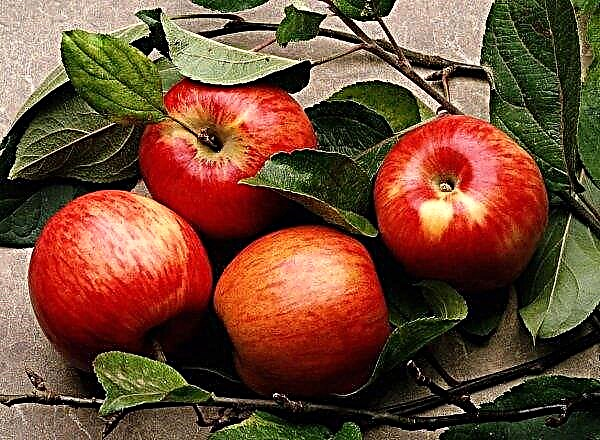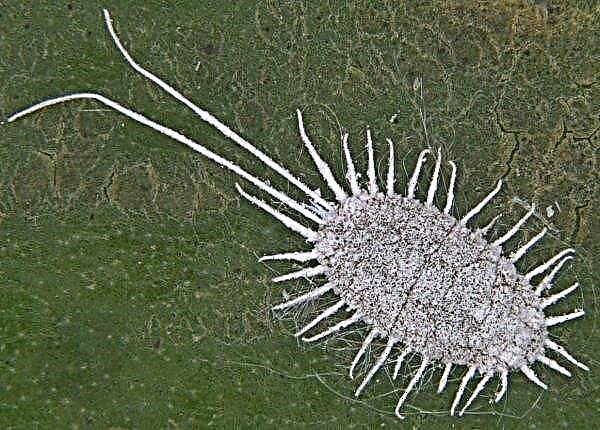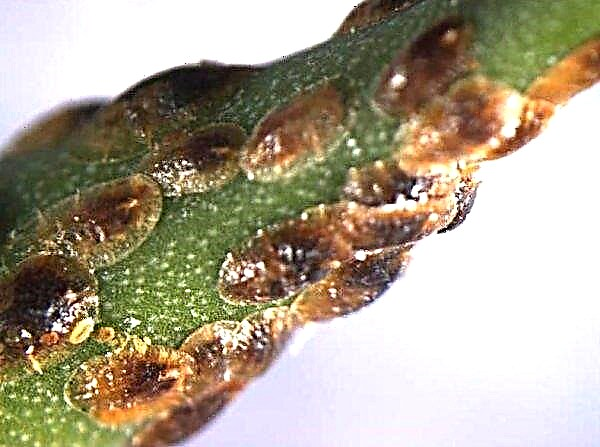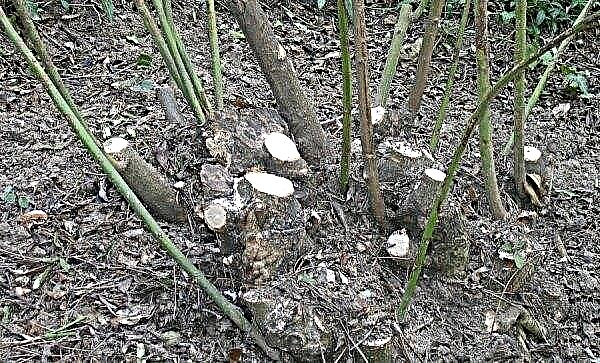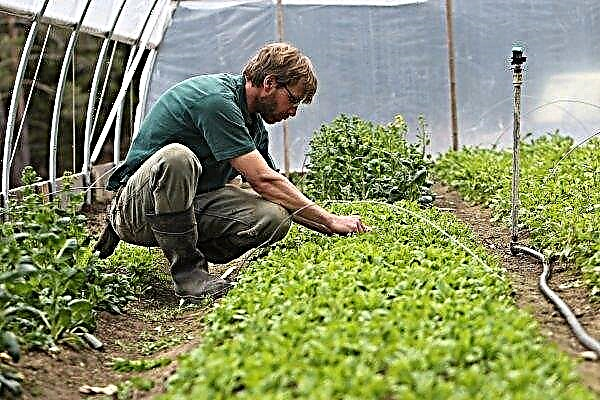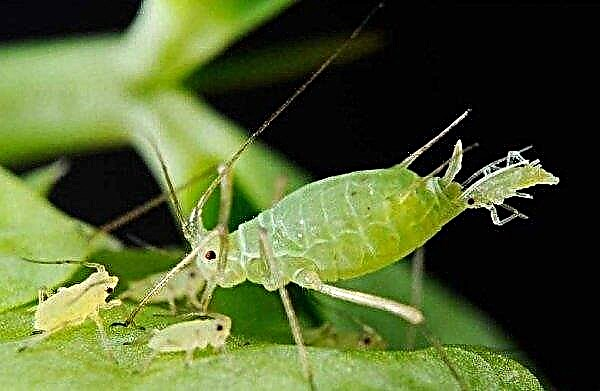Daffodils are one of the first flowers that open their buds on a flowerbed in the spring. They are appreciated because of the beauty, versatility of application, pleasant aroma. Today, a wide range of varieties of this decorative culture is presented to the choice of flower growers. A description and recommendations for the cultivation of one of them, namely Tahiti, can be found in the article.
Botanical grade description
Variety of Tahiti (lat. Narcissus Tahiti) is one of the most popular. It forms a strong long peduncle, which reaches 35–40 cm. The leaves are basal, linear. Terry flower petals, yellow-orange. After opening, the perianth is very bright. Towards the end of flowering, it becomes lighter. The size of the flowers with a sharp, sweet aroma is 8-10 cm. The buds open in April-May. Flowering lasts 2-3 weeks.
Tahiti is appreciated for its characteristics:
- high level of frost resistance;
- long, plentiful flowering;
- strong immunity;
- resistance to adverse weather conditions.
The described culture is great for cutting. Flowers are able to stand in a vase without signs of wilting for a long time. Thanks to these features, the Tahiti variety is of interest for commercial cultivation.
Did you know? According to an ancient legend, daffodils appeared at the place of death of a handsome young man who died due to the fact that he could not tear himself away from his reflection in the river. Later in psychology, the term «narcissism»denoting excessive narcissism.
The use of flower in landscape design
Daffodils are traditionally planted in a mixborder. In this composition, flowers occupy a place in the foreground. Dense foliage crops should be planted in the neighborhood that will cover the daffodils when they begin to fade.

The described plant is also customary to plant in rows. With such a landing, it is placed along the paths along the banks of reservoirs. The bright color of the flowers allows them to be planted as a bright accent on the green trimmed lawn. They are also used in rock gardens, discounts.
The best neighbors for daffodils are tulips, hyacinths, daylilies, crocuses, viola. If you want to create a perennial flower bed, then in the vicinity of the described culture should be planted undersized perennials. Tahiti yellow daffodil looks beautiful when planted next to white snowdrops and blue-purple mouse hyacinths (muscari), geraniums, hosts, cuffs.

Flower planting
The beauty and health of the decorative culture largely depends on a well-chosen place for growing. A narcissus is able to fully reveal its decorativeness only when planting in a well-lit area, sheltered from drafts. However, it is worth noting that he is able to adapt to partial shade growth.
The flower "does not put forward special preferences for soil." The main thing is that it be well-drained and fertile. Experts advise to grow the culture in a neutral and slightly alkaline level of acidity. When choosing a site for the subsequent planting of bulbs, it is necessary to make sure that water will not accumulate and stagnate - in waterlogged soil, plants can hurt, rot and die.
Did you know? The Chinese consider the daffodil a New Year's symbol. The opening of a flower by this date indicates a good sign indicating happiness in the coming year.
It is imperative that you take into account which predecessors previously grew on the site. Planting after closely related plants, for example, tulips, hyacinths, crocuses, lilies, increases the risk of spreading diseases and parasites. The success of growing daffodils also depends on the timeliness of planting, competent preparation of the soil on the site and compliance with the technology of placing bulbs in the ground.
Landing time
The most favorable time for planting daffodils is the end of August or the beginning of September. If you plant in a timely manner, then the plants will have time to take root in the onset of cold weather, safely survive the winter and sprout in the spring. Rooting of bulbs occurs at a temperature of + 5 ... + 7 ° C.
In other calendar periods, planting daffodils is impractical and even dangerous. So, for example, when planting earlier than August, the probability of damage to the bulbs by pathogens or harmful insects increases. There is a chance that the seed will sprout before the thermometer goes below zero, and the cold will destroy the soft growth.

How to plant
An important condition for a successful landing is the proper preparation of the site. It should be started in advance, for several weeks or months.
The soil needs to be dug deep and additional components should be introduced into it:
- river sand;
- humus;
- nitrophosco.
If the earth on the site is clay, then it is worth adding coarse river sand (20 kg / m²). Sandy soil must be enriched by making peat or humus (15 kg / m²). You can lower the acidity with limestone (200-500 g / m²).

Landing holes must be prepared 7-14 days before disembarkation. The recommended depth is 12–15 cm, the distance between them is 15–20 cm.
Bulbs for planting are selected, guided by the following parameters:
- solid, without loose patches;
- medium sized;
- without signs and smell of mold and rot;
- with a dry and dense bottom.
To avoid the development of diseases, before being placed in the soil, planting material must be treated with Vitaras, Maxim (according to the instructions) or placed for 30 minutes in a solution of potassium permanganate (0.5%).
When landing, you must proceed as follows:
- Line the bottom of the holes with a layer of wet sand 1-2 cm high.
- Put the bulbs on it with the sharp end up.
- Sprinkle the seed with a layer of earth.
To prevent freezing of the bulbs, you can cover the soil with mulch of dry leaves, straw with a layer of 6-8 cm. It is necessary to remove the shelter in the spring.

Flower care
Narcissus refers to those plants that do not require a lot of attention. But if the owner of the site grows them for the long-term maintenance of beauty on the site or for sale, he needs to provide the culture with quality care, which consists of regular moisturizing, top dressing, cultivation, weeding. In addition, it is important to properly prepare the bulbous culture for wintering.
Due to the fact that daffodils are hygrophilous, they need to be watered often - 2-3 times a week. But it is important to prevent not only the drying out of the soil, but also its overmoistening. Therefore, when choosing the regime and volume of irrigation, you should focus on weather conditions and soil conditions. On average, for 1 m² of onion plantings, it is required to spend 50 liters of warm, settled water. The area where the soil is moistened to a depth of 30–35 cm is properly watered.
Important! You can’t feed daffodils with manure, this can harm the bulbs and ruin the plantings. If there is a desire and the opportunity to bring organic matter to the site, then you need to do this before planting the predecessor culture.
Each irrigation and rainfall should be combined with cultivation. This procedure allows you to improve the moisture and air permeability of the soil, remove the hard crust from its surface, which prevents the flow of water and oxygen to the bulbs and root system. Since weeds are a breeding ground for pathogens and harmful insects, they should be regularly removed with weeding.

To simplify the care of daffodils allows mulching. Using the specified agrotechnical method, it is possible to reduce the number of weeds (to inhibit the growth of weeds), maintain the optimum level of soil moisture, and reduce the number of cultivations. Mulch planting with peat, sawdust, needles, fallen leaves. In order for the plants to bloom as long and as plentiful as possible, they should be fed with mineral complexes. The recommended amount of top dressing is 3-4 per season.
You can create your own schedule of fertilizing daffodils or use the recommendations given in the table:
| Application Period | Fertilizer quantity per m² |
| when shoots appear or in the presence of snow | nitroammophos - 30 g or “Kemira station wagon” (1 tbsp. l / 10 l of water) |
| during the flower stalk exit | nitrogen - 10 g; potassium - 8 g |
| during budding | nitrogen - 10 g, phosphorus - 5 g, potassium - 8 g or “Riga mixture” (20-30 g) |
| during flowering | phosphorus - 5 g, potassium - 8 g |
If it is noticed that the number of flowering shoots has sharply decreased, this is a signal to the owner of the flower bed to transplant. Digging the bulbs must be done as soon as the leaves turn yellow and lie on the ground. It is impossible to procrastinate with the extraction of planting material from the ground, since late excavation can significantly impair its quality and germination. After digging the bulbs should be discarded, cleaned, kept in potassium permanganate and dried. After all the necessary procedures, they need to be stored at + 17 ° C until planting in the spring.

Tahiti narcissus is able to bring a bright touch to the decoration of the site. In order for him to please you with his beauty for several years, he needs to be planted correctly and to provide the plant with quality care.




